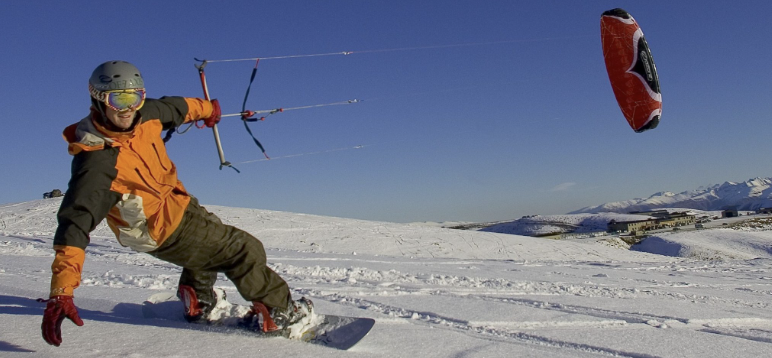Snow Kiting: The Ultimate Winter Thrill
Snow kiting, or "kite sailing on snow," is where kite flying meets skiing or snowboarding. It’s an adrenaline-filled winter sport unlike any other, and here’s what you need to know to embrace the snow and wind in a whole new way.
Get the Gear Right
Your power kite is the centerpiece of snow kiting. Unlike a standard kite, they’re built to harness the wind’s full force. You’ll also need a harness to stay securely attached, a control bar for steering, and skis or a snowboard. Opt for skis if you’re into stability or snowboards if carving through snow is your jam. You're ready for mobility and warmth with a solid pair of snow boots, warm gloves, goggles, a helmet, and a good set of layered winter gear.

The Perfect Spot
The best snow kiting spots are wide-open spaces with plenty of snow and consistent wind. Frozen lakes, snowy plains, and high-altitude plateaus are all prime locations. Avoid areas with trees, buildings, or power lines—they’ll do more than ruin your session. Wind direction and speed matter too; steady winds between 10-25 mph are ideal for most beginners.
Harness the Wind’s Power
This is where the magic happens. Once your kite is airborne, you’ll feel the exhilarating pull of the wind as it propels you across the snow. The feeling of weightlessness and speed is like nothing else—a mix of freedom, power, and pure fun.

Mastering Kite Control
Your control bar is your link to the kite. Pull left to steer left, pull right to go right—it’s that simple at the start. Learning to depower the kite is crucial, as it helps you manage the wind’s force and keeps you in control. Practice controlling the kite in lighter winds before adding skis or a snowboard to the mix.
Skis or Snowboard: It’s Your Call
On skis, you can use poles to stabilize and direct yourself, which makes it a great option for beginners. Snowboarders rely entirely on edge control, making it slightly more advanced but also more dynamic. Either way, the wind is your motor, and your job is to work in harmony with it.

Safety Is Non-Negotiable
Snow kiting demands respect for nature’s unpredictability. Always wear a helmet and impact-resistant goggles, and bring along gloves with good grip. Learn how to safely land and depower your kite so you can react quickly if winds pick up unexpectedly. Check your gear before heading out, and let someone (e.g., Mom) know your plans, including your location and expected return time.
Riding Upwind Like a Pro
Learning to ride upwind is what sets skilled snow kiters apart. By angling your kite and adjusting your stance, you can carve back toward your starting point rather than relying on a long walk back to base.

Enjoy the Ride
Once you’re comfortable with the basics, snow kiting is all about the ride. Let the wind guide you as you skim across snowy terrain, and when you’re ready, start experimenting with small jumps or turns. Feeling bold? Advanced snow kiters incorporate freestyle tricks and even big-air jumps into their sessions.
Find Your Tribe
Joining the snow kiting community is a fantastic way to level up your skills and discover new spots. Check out local groups, meetups, or online forums to connect with other enthusiasts who share your passion.

Capture the Moment!
Whether it’s your first glide or a perfectly executed trick, snow kiting is a visual spectacle. A helmet-mounted GoPro or a friend with a camera can help capture the excitement so you can relive and share the adventure.
Embrace the Adventure
Snow kiting is a blend of physical challenge, mental focus, and connection with nature. The vast landscapes, the invisible currents of the wind, and the sheer joy of moving across the snow make it an unforgettable experience.